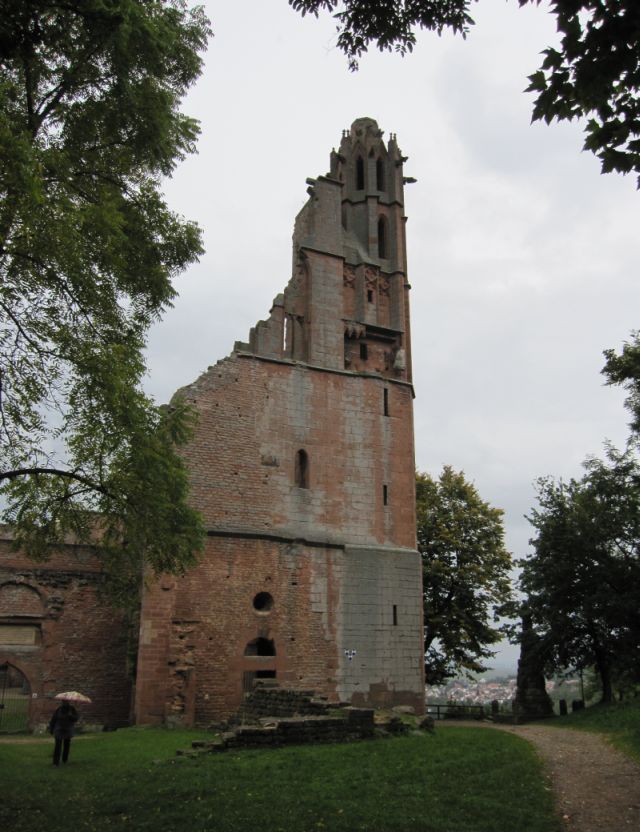 The Haardt Gebirge in Germany, the Haardt mountains near Bad Duerkheim, feature a Celtic megalith up in the hills. It’s called the Teufelsstein — the Devil’s stone — and it’s situated near the Limburg Abbey monastery. According to The Megalithic Portal , the stone was once a sacrificial altar. When I visited Germany last October, I did not have a chance to visit the Teufelsstein, but in the early 1800s, James Fenimore Cooper visited it, and wrote about it, in his “Legends of the Rhine”.
The Haardt Gebirge in Germany, the Haardt mountains near Bad Duerkheim, feature a Celtic megalith up in the hills. It’s called the Teufelsstein — the Devil’s stone — and it’s situated near the Limburg Abbey monastery. According to The Megalithic Portal , the stone was once a sacrificial altar. When I visited Germany last October, I did not have a chance to visit the Teufelsstein, but in the early 1800s, James Fenimore Cooper visited it, and wrote about it, in his “Legends of the Rhine”.
The Devil’s Stone was described as a natural rock … on which the Pagans had offered sacrifices. … [The legend goes] that when the pious monks were planning their monastery, a compact was made with the Devil to quarry the stones necessary for so extensive a work, and to transport them up the steep acclivity. The inducement held forth to the evil spirit for undertaking a work of this nature, was the pretence of erecting a tavern, in which, doubtless, undue quantities of Rhenish wine were to be quaffed, cheating human reason, and leaving the undefended soul more exposed than usual to assaults of temptation. … Completely deceived by the artifices of the men of God, the father of sin lent himself to the project with so much zeal, that the Abbey and its appendages were completed in a time incredibly short; a circumstance that his employers took good care to turn to account, after their own fashion, by ascribing it to a miracle of purer emanation. By all accounts the deception was so well managed, that notwithstanding his proverbial cunning, the Devil never knew the true destination of the edifice until the Abbey-bell actually rang for prayers. Then, indeed, his indignation knew no bounds, and he proceeded forthwith to the rock in question, with the fell intent of bringing it into the air above the chapel, and, by its fall, of immolating the monks and their altar together, to his vengeance. But the stone was too firmly rooted to be displaced even by the Devil; and he was finally compelled, by the prayers of the devotees, who were now, after their own fashion of fighting, fairly in the field, to abandon this portion of the country in shame and disgrace. The curious are shown certain marks on the rock, which go to prove the violent efforts of Satan, on this occasion, and among others the prints of his form, left by seating himself on the stone, fatigued by useless exertions. The more ingenious even trace, in a sort of groove, evidence of the position of his tail, during the time the baffled spirit was chewing the cud of chagrin on his hard stool.
James Fenimore Cooper, from The Heidenmauer; or, The Benedictines, Philadelphia: Carey & Lea–Chestnut Street, 1832.
